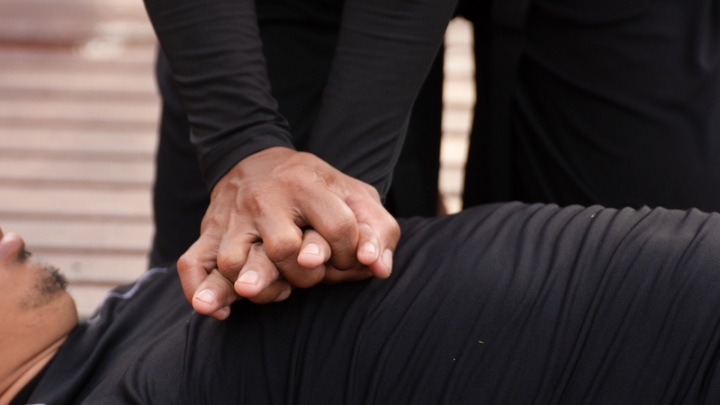(RxWiki News) Cardiopulmonary resuscitation (CPR) is a procedure done when the heart stops beating. It can be a lifesaver.

In fact, when done immediately, CPR can double or triple the chance of survival after cardiac arrest.
That's because it helps keep blood flowing and therefore can extend the window for successful revival when trained medical help arrives.
Cardiac arrest can happen at any time and in any place. That means the need for CPR can be anywhere — whether it’s at home, at work or at the park.
Recognizing signs of cardiac danger is important in knowing when CPR is necessary. Symptoms include sudden collapse, not breathing, loss of consciousness, no pulse and/or becoming unresponsive. In any instance, call 911 quickly. If possible, send another person to call 911 while you tend to the person who is experiencing cardiac arrest.
There are two types of CPR:
- Health care providers and trained individuals use conventional CPR. This involves alternating chest compressions and mouth-to-mouth breaths. It is done in a ratio of 30 compressions to two breaths. Rescuers are advised to do chest compressions at 100 to 120 compressions per minute. The compressions should be at least two inches deep for an average adult.
- Members of the general public and bystanders should perform compression-only CPR. This is similar to conventional CPR but without mouth-to-mouth breathing. This is recommended for teens or adults. Your hands should push hard and fast in the center of the chest.
To ensure that you provide high-quality CPR, take these important steps:
- Allow minimal interruptions in chest compressions.
- Give compressions with good rate and depth.
- Do not lean on the person between compressions.
- Ensure proper hand placement.
- Avoid excessive ventilation.
Automated external defibrillators (AEDs) can also maximize survival. AEDs are devices that deliver a shock to the heart, which can bring the heart back to a normal rhythm. Awareness of AED locations at work is important because every second counts in these situations.
When should you do CPR? First, remember that heart attacks and cardiac arrest are not the same:
- A heart attack is a circulation issue. This happens when blood flow to the heart is blocked. The person may have shortness of breath, chest discomfort and discomfort in the upper body. Some people may experience nausea, vomiting or dizziness/lightheadedness. However, the heart is still beating.
- Cardiac arrest is an electrical issue. An irregular heartbeat causes the heart to beat improperly. This then prevents the heart from pumping blood to the brain and lungs. This will lead to the person becoming unresponsive. And if the person does not receive treatment right away, death will occur. In this case, CPR is recommended.
There is a link between the two types of health events: A heart attack is a common cause of cardiac arrest. In either case, 911 should be called quickly.
Courses are available for those interested in CPR training. These may include in-person teaching with a certified instructor. Passing the course will give you two years of CPR certification.







